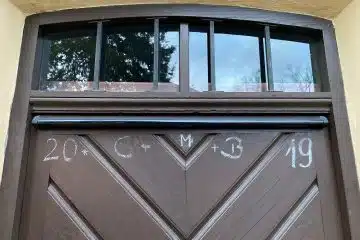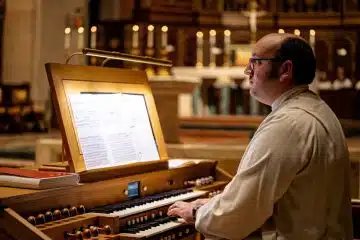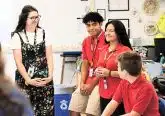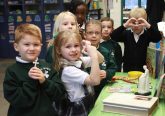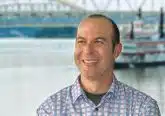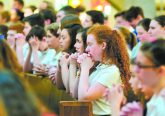Award Winning STEM Program
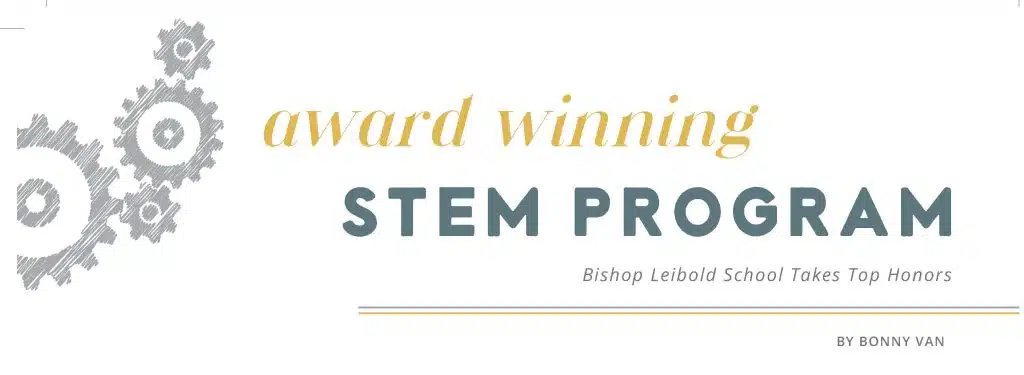
What do lettuce and bicycles have in common? Dig deep enough and you’ll find both in the STEM (Science, Technology, Engineering and Mathematics) program at Bishop Leibold School in Dayton. For the 12th consecutive year, hands-on experiments, a diverse range of creativity and extensive faculty support helped land the K-8th grade school in the top spot for The Governor’s Thomas Edison Awards for Excellence in STEM Education and Student Research for the 2021-2022 school year.
Starting the program 12 years ago, STEM coordinator Beth Allaire focused on building a “comprehensive plan,” which included STEM training for all Bishop Leibold teachers and programming across all grade levels.
“We have a class period that is dedicated each week for each grade level to experience STEM programming through the engineering design process,” she said.
This time allows students to collaborate, make decisions and think through problems. However, Bishop Leibold’s STEM education goes beyond designing, testing, evaluating and making improvements. Students must also explain what they are doing and why—in writing.
“We make sure we have all of our teachers on board and we make sure it’s cross curricular,” explained Bellaire. “Our students are becoming very good at making an argument based on evidence. So, when they are truly engaged in a project or a concept that they have designed, then they are able to write a strong piece of writing, arguing why their design is the best design or why their design is going to be the strongest design. … they’ve learned how to do the ‘claim, evidence and reasoning’ (CER) writing through STEM.” Teachers from language arts and STEM collaborate to help students write that piece.
The Ohio Academy of Science selected 45 schools and 544 teachers to receive The Governor’s Thomas Edison Award for Excellence based, in part, on student involvement in youth science programs beyond the classroom. STEM education at Bishop Leibold includes after-school clubs, science fairs, summer camps, guest speakers, field trips to area engineering companies and an annual Science Fest that draws up to 700 people.
“We try to take advantage of all the partnerships that we can in the local community to help inspire our kids to see what the possibilities are for careers and ways of thinking about things, and just encouraging them to be problem solvers and good listeners and team members … that’s going to foster good people skills,” said Allaire.
“Students look forward to weekly STEM classes where they have the opportunity to work collaboratively to create, design, get messy and have fun,” said Jill Klimaski, a third- grade STEM teacher.
“The recognition that Bishop Leibold School receives from the Ohio Academy of Science—12 years in a row now—never gets old,” said principal Dr. Theodore Wallace. “Our Science Fest event each spring is a gym packed with families and community partners for science. It is an incredible experience for all ages.”
Classrooms have numerous projects currently in design and development phases, such as the fifth-grade students’ work designing and building a prototype prosthetic arm. And the energy bike fifth-, sixth- and seventh-grade girls learned to build and operate during summer camp is now used for learning. “These girls will go into the classroom and they’ll use the bike to teach about how the energy bike generates electricity for light bulbs and appliances,” said Allaire.
Students learn new technologies being integrated into the program, including a 3D printing station, leveling and Tinkercad, a 3D modeling program.
During the pandemic, teachers got students outside to continue working with STEM applications, building an outdoor vegetable garden space. “We now grow vegetables, we harvest them and we donate them to a local food pantry,” said Allaire. This includes lettuce from an indoor hydroponic garden. Up next: a mobile solar unit to pump water for the gardens.
“I just love my job and love watching these kids,” said Allaire. “Once you start the process, the kids just go. They take it and they run with it. They show you where you need to go.”
This article appeared in the December 2022 edition of The Catholic Telegraph Magazine. For your complimentary subscription, click here.





